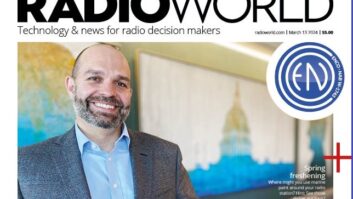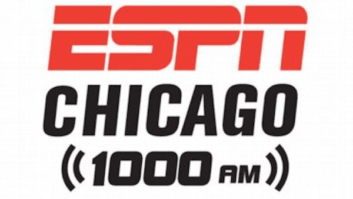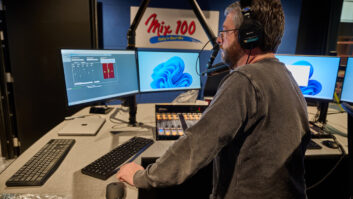I’ve spend more than a few columns in the past extolling the virtues of Category 5 premise/data cables. And more than a few readers have taken the plunge and are using it not just as data cable but also for things like RS-422 and RS-485 machine control, digital audio or even analog audio.
This last application, analog audio, is probably the most controversial. After all, I am advocating the use of unshielded cables (“UTP”) to run signals that have always been shielded, right?
Well, the phone company has run audio signals on unshielded cable for years. Of course, their cable is not data cable; it’s POTS, plain old telephone service, cable. And it works up to a high frequency of 3500 Hz. So let’s ignore it for now.
We’ve done some testing at the Belden Engineering Center running analog audio down UTP, just to see how good it is, especially in crosstalk. Part of the problem is that, for data, the specs don’t start until 772 kHz, long after analog audio. So I told the engineer in charge of the testing, Dave DeSmidt at [email protected], to test the most generic Category 5 UTP he could find.
Analog and CAT-5
He ended up using Belden 1752A, which is a stranded Category 5 patch cable. Stranding makes any cable seriously worse at high frequencies. However, at analog audio frequencies, solid vs. stranded doesn’t make much of a difference. The only bell or whistle this cable has is that the conductors are bonded together. This improves impedance at the data frequencies, but, as you should know by now, impedance at analog audio frequencies is not important. (A quarter wavelength at 20 kHz is more than 2 miles.)
The bonded pairs do improve twist consistency and therefore probably improve crosstalk down at those low analog audio frequencies (20 Hz to 20 kHz) since the pair remains more “balanced.” So 1752A was probably was a good choice for all the testing.
So what did we find?
Maybe I forgot to tell Dave just where to stop testing, because he came back to say that he had tested all the different pair iterations. There are six combinations in a four-pair cable. You know, Pair 1 to Pair 2, Pair 1 to Pair 3, Pair 1 to Pair 4, Pair 2 to Pair 3, Pair 2 to Pair 4, Pair 3 to Pair 4.) He then averaged the crosstalk between all of them.
The worst case was a crosstalk of -95 dB at 50 kHz! Below 20 kHz, average crosstalk was around -100 dB or even lower. This was done with cables of 100 meters, or 328 feet, in length, which is the maximum cable length in the standard data specs. So what’s the problem?
Even generic Category 5 cable will do just fine running analog audio. The only caution flag I would put up is to say that the balance of the source and destination devices also influences these crosstalk numbers. The better the balance, the lower the crosstalk will be.
There are many people out there who still don’t understand what this means. If you need CD-quality noise-floor, generally around -90 dB, you can get this kind of performance, and better, from an unshielded generic Category 5. And, if you need better than -95 dB …
We also tested our top-of-the-line cable, Belden 1872A (“MediaTwist”). The problem was, at analog audio frequencies, we couldn’t read the crosstalk! Now our Network Analyzer has a crosstalk “floor” of -110 dB, so the crosstalk at all audio frequencies was below -110 dB.
I hear some of you old-timers say, “Well then, why did we fool with those shields for all those years if we didn’t need them?”
Why, indeed? Most shields in install cable are foil shields. They don’t even begin to have any shield effectiveness until well into the Megahertz. In other words, they are RF shields. If you put in a heavy-duty high-coverage braid shield, you can get that effective shielding down to 100 kHz. Below 100 kHz, there is no standard shield that has an effect at all!
In other words, down at the audio frequencies themselves, especially if we’re comparing shielded and unshielded cables, those foil shields are doing absolutely nothing.
Therefore, if you have poorly designed and poorly twisted pairs, you’ll get crosstalk. And this is where the advantage of Category 5 data cable comes in, because those pairs are precisely twisted, sometimes even bonded, so their crosstalk performance for analog audio is amazing.
A more weighty issue
I used to weigh a lot more than I do now. In fact, I have lost over 100 pounds in the last three years. So, you’ll understand why I used to be called “Lumpy” by a lot of my friends at Belden. I often play “Stump the Lump” when I give a question-and-answer session at one of the talks I give to broadcast engineers.
Well, I did get stumped with a comment made by Dave Obergoenner, who works for the Zimmer Radio Group. I was giving a presentation to the St. Louis section of the SBE, and we were in a free-ranging discussion of Category 5 and its enhanced versions. Dave said there was one problem with Category 5 UTP, which could only be solved by shielded Category 5. You can tell from my diatribe above that I was ready with a dozen answers why the unshielded version was better.
“Oh, yeah,” I said, “What is it?”
“Lightning!” said Dave.
That’s right, lightning! Seems Dave was working at a station that was struck by lightning. The equipment attached was ruined; at least 80 percent of the equipment was damaged or destroyed. The stuff with shielded cable gave the lightning something to conduct down, and a greater percentage survived. Dave said only 20 percent of that equipment got fried.
So I can’t honestly say UTP is the answer to every problem. And there is a lesson here, if you do use shielded cable. I’m not so sure the “telescopic” grounds you often use would help with lightning. You know, I’m talking about connecting the ground at one end to prevent group loops.
That’s one of the great advantages of UTP: no shield, no drain wire, no ground, no ground loops. In fact, go to your computer/data manager and ask, “What is a ground loop?” I’ll just bet they can’t tell you. Wouldn’t that be a wonderful world to be in?
Unless, of course, you want to be lightning-safe. In which case, you might want to use shielded cable. Then you have to make sure you have a very good ground. To avoid ground loops, you should really put in a star ground system, so that you can ground both ends of the cable.
Dave says that lightning exhibits a frequency range between 2 kHz and 2 MHz. You have to present a low-impedance (R-C-L) path for these frequencies. That would also mean the Neil Muncy “Pin 1” problems comes in and you’d better hope that Pin 1 is grounded to the chassis, and not to something on the circuit board inside.
I’d bet that those devices that have a ground trade or bus bar inside the chassis are among the 20 percent that were fried by lightning, even with a good ground connection.
I’m no meteorologist, and would be delighted to hear from anyone with more information on lightning.












